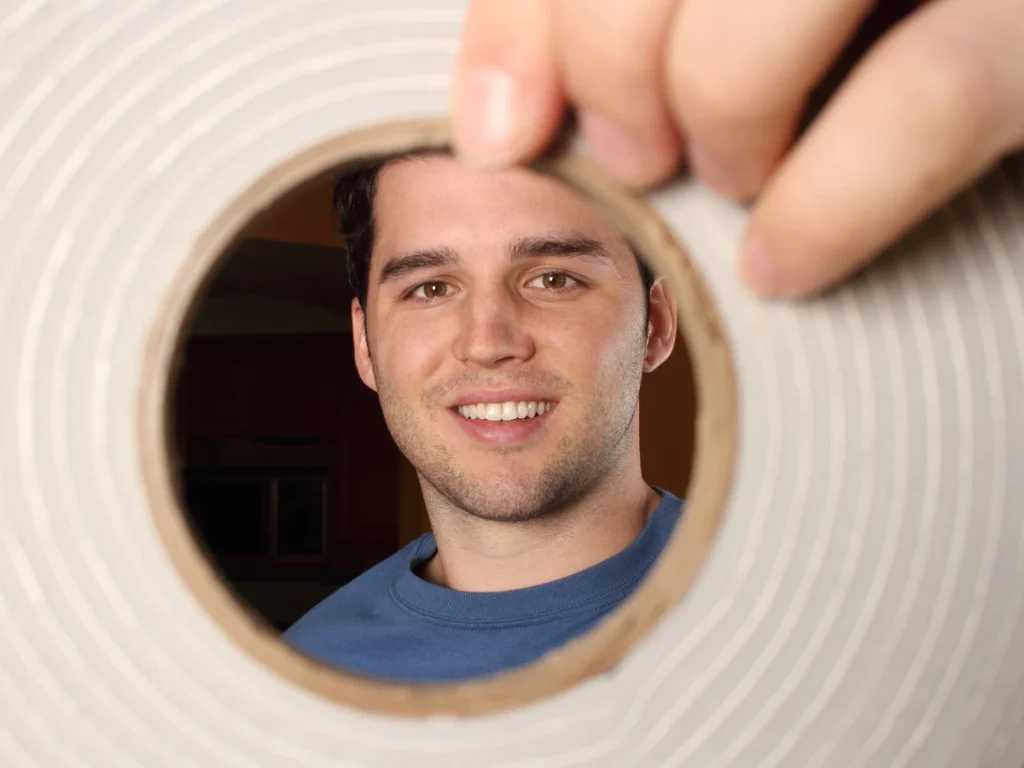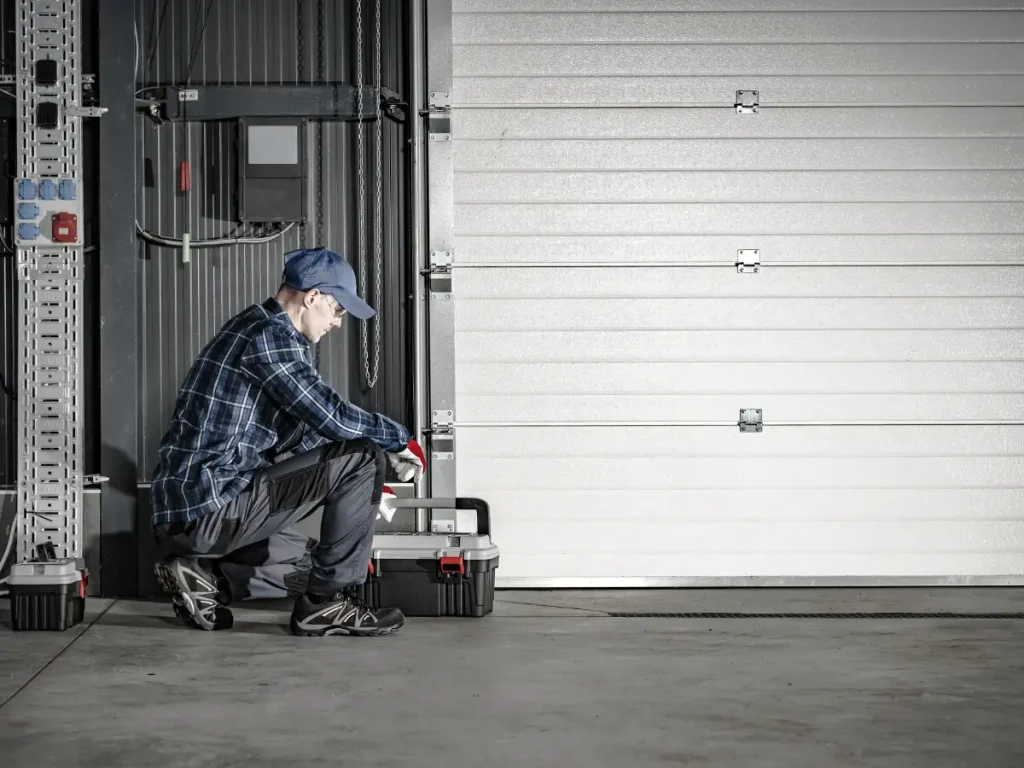Ever noticed scorching heat seeping into your garage, dust piling up near the door, or a sudden puddle after a monsoon storm? In Arizona’s extreme climate, these are signs that your garage door weather stripping may be worn out. A proper seal helps keep out intense heat, blowing dust, and stormwater. It helps protect stored items and reduces your energy costs. This guide explains what it is and how it’s installed by professionals.
Why Garage Door Weather Stripping Matters
Many homeowners don’t realize that unsealed garage doors let in air, water, and dust, causing energy loss and potential damage. Proper weather stripping helps:
- Maintains indoor temperatures – Gaps in your garage door allow hot or cold air to seep in, making it harder to regulate the temperature in your home. Weather stripping keeps indoor air in and hot or cold air out, helping lower your energy bills.
- Prevents water damage – Rainwater can easily enter through unsealed gaps, causing puddles that may lead to mold, rust, or damage to your garage floor and stored items. Weather stripping helps block moisture from getting inside, and using epoxy for garage floors adds an extra layer of protection by sealing the surface against water infiltration.
- Keeps out insects, rodents, and debris – Small gaps around your garage door are open invitations for pests and outdoor mess to find their way in. A tight seal helps block insects, rodents, leaves, and dust from invading your space.
- Reduces wear and tear on your door and floor – When your garage door closes against a cushion of weather stripping, it minimizes the impact and vibration. This helps your door, opener, and floor last longer. In multifunctional garages that double as workshops or utility rooms, adding commercial ceiling tiles can improve insulation, dampen noise, and give the space a more finished, professional appearance.
If your weather seals are cracked, brittle, or missing, you’re likely due for a weather stripping replacement. If the door itself is warped or damaged, garage door replacement or repair may be needed.
Common Weather Stripping Options for Your Garage Door
Not all materials are created equal, especially in a climate as extreme as Arizona’s. Between the dry heat, dust storms, and sudden monsoons, choosing the right type makes a big difference in performance and longevity. Below are some of the most common types of weather stripping:
Rubber weather stripping is a popular choice because it’s flexible and long-lasting. It’s ideal for sealing out heat and dust, and it compresses well against the garage floor for a tight fit. For Arizona homes, rubber seals with UV resistance work best to withstand the intense sun without cracking.
Vinyl weather stripping is a budget-friendly option that helps keep out dust, moisture, and bugs. It’s lightweight and holds up well against mold and mildew, which can be helpful during monsoon season. Vinyl seals are also more rigid, making them suitable for homes that don’t face a lot of direct sun exposure.
If your garage takes a beating from frequent use or you’re looking for a more permanent solution, metal weather stripping might be the way to go. It’s tough, long-lasting, and handles high-traffic garages well. Technicians typically use rust-resistant aluminum or steel, especially useful in areas prone to flash flooding during Arizona’s rainy months.
These feature dense bristles that fill uneven gaps, making them ideal for older garages or concrete floors that aren’t perfectly level. Brush seals are especially effective in Arizona for keeping out fine desert dust and small critters. These seals are most often installed along the sides or top of the door, where they easily adjust to uneven gaps.
Foam strips are often used around garage door frames. They’re lightweight, easy to compress, and provide basic insulation. However, they’re not as durable in Arizona’s heat and tend to wear out faster.
Silicone weather stripping is flexible and extremely durable, even in harsh climates. It resists cracking from UV exposure and works well in areas with large temperature swings, making it a solid choice for desert environments.
Magnetic seals work like those on refrigerators, forming a tight closure without compression. They’re more common on specialty or insulated garage doors, but not typically used on standard residential models.
When to Change the Weather Stripping on Your Garage Door
Weather stripping doesn’t last forever. You should inspect it at least twice a year, before summer and winter. Replace it if you see any of the following:
- Light or air coming in from outside
- Water is pooling near the garage door
- Visible cracks or missing pieces
- Noise or rattling during high winds
Ignoring these signs can lead to structural damage, pest infestations, and rising energy bills. In these cases, garage door repair may be needed to keep everything properly sealed. Regular garage door maintenance helps prevent long-term damage and keeps your entire system running smoothly.
How to Replace the Weather Stripping on Your Garage Door
Start by removing the old seal and cleaning the surface. Cut the new weather stripping to match the size you need. For bottom seals, slide or nail it into the retainer; for side and top seals, attach them using nails or screws. Panel seals are applied with adhesive between sections. For best results, have a professional handle the job to ensure a tight, even seal that lasts.
How to Install Garage Door Weather Stripping: What Technicians Do
Installing garage door weather stripping requires precision, the right tools, and knowledge of various door types. Technicians follow a careful process to ensure a strong, lasting seal.
- Securing the Base of the Door
For metal doors, professionals slide a U-shaped rubber seal into the bottom retainer, using a lubricant to ensure a snug fit. Wooden doors often require rubber strips to be carefully measured, cut, and nailed directly into the bottom edge using galvanized fasteners.
- Blocking Water at Floor Level
Technicians clean and prep the garage floor before applying a heavy-duty adhesive or anchor screws to secure the threshold. They use weighted rollers to press the seal down evenly and ensure full adhesion over 24 hours.
- Sealing Around the Frame
The door frame is carefully checked for rot or other damage. Technicians then cut weather stripping to the exact dimensions of the frame and fasten it using corrosion-resistant screws. They ensure the seal gently compresses against the door when closed.
- Filling Irregular Gaps
Brush seals are measured and installed into aluminum or steel retainers along the sides or top of the door. These are ideal for irregular gaps, and installers adjust bristle tension for a secure but flexible seal.
- Replacing and Upgrading Door Stops
These are cut with precision tools to match the garage frame. Professionals align the molding so the weather strip flange presses evenly against the closed door, then secure it with nails or screws.
- Insulating Between Door Sections
Technicians clean garage door panel edges and apply self-adhesive V-shaped strips to seal the gaps between each panel. These flexible strips compress when the door is closed, helping to maintain insulation and block air, dust, and moisture from passing through older, non-interlocking panels.
What’s the Best Garage Door Weather Stripping?
The best garage door weather stripping varies based on your door type, climate, and specific needs.
- For heavy rain: P-shape or threshold seals
- For uneven floors: Bulb or T-shaped seals
- For drafty, older doors: Integrated stops and panel seals
- For dusty areas: Brush seals
You’ll also want to invest in UV- and moisture-resistant materials, especially in extreme climates.
Seal Today, Save Tomorrow
Whether you’re looking to lower energy bills, block pests, or extend the life of your garage door, sealing and insulating with the right products makes a noticeable difference. Knowing how to replace garage door weather stripping and choose the right materials can help you avoid costly repairs later. To keep your garage sealed and protected year-round, schedule a professional checkup with Arizona Garage Door & Repair at (602) 600-6069.



